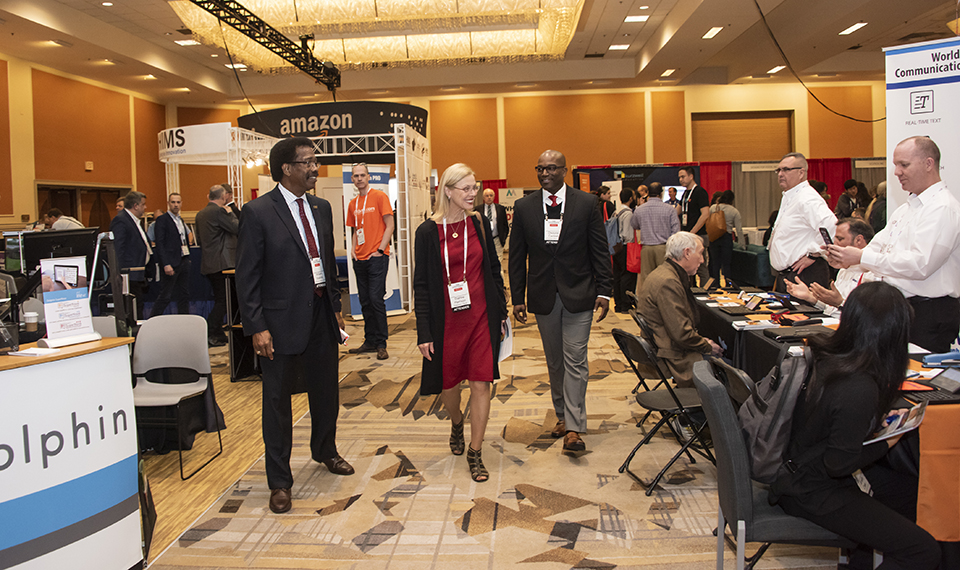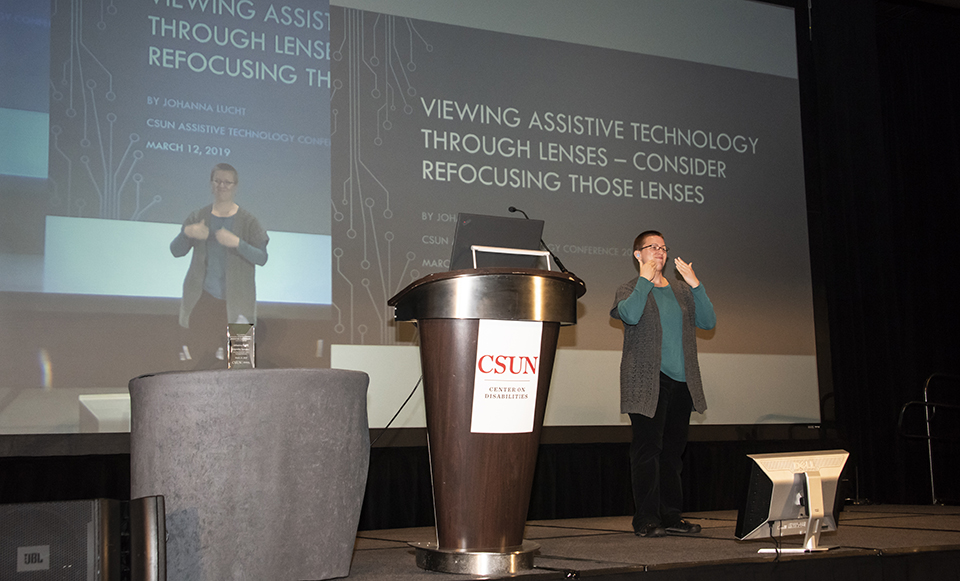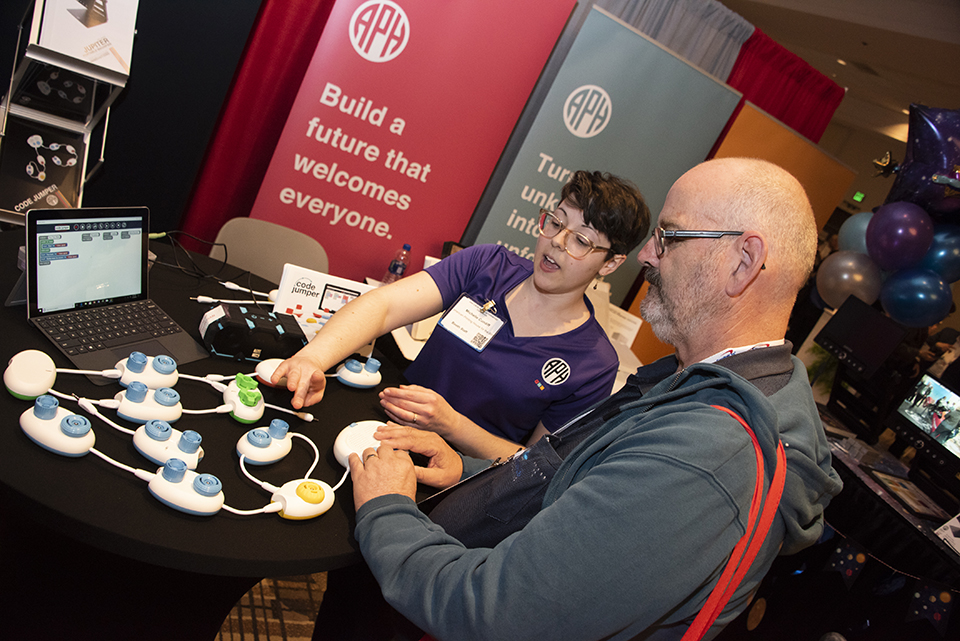CSUN Assistive Technology Conference Showcases Innovations For a More Inclusive World
The CSUN Assistive Technology Conference has a specific purpose — to advance knowledge and the use of technology that improves the lives of individuals with disabilities — but its impact is wide-ranging.
In addition to companies that specialize in such things as captioning technology for people who are deaf and hard of hearing and voice-controlled devices for people who are visually impaired, the 34th annual conference, held March 11-15 in Anaheim, was attended by representatives from banks, grocery stores, retail chains, medical companies, airlines and many more companies with vast customer bases.
If attendees weren’t developing assistive technology, they were certainly interested in using it.
At a corner booth in the bustling exhibit hall, the three-person team from Feelif, a tech company from Slovenia, found themselves addressing a steady stream of potential business partners. There was no time to check out other areas of the conference, as the Feelif team was busy showing off their premium tablet for people who are blind and visually impaired, which uses vibrations to simulate the experience of feeling Braille dots.
“It’s very busy,” said Rebeka Zerovnik, the company’s international business development associate. “We don’t have enough people to work the booth.”
The 34th CSUN Assistive Technology Conference — organized by the California State University, Northridge Center on Disabilities, and known in the industry as the CSUN Conference — attracted exhibitors, researchers, consumers, practitioners, government representatives and speakers from around the world.
For the first time, the conference was held at the Anaheim Marriott after a long run in San Diego. The change of venue didn’t seem to hurt attendance — final attendance numbers hadn’t been tallied early this week, but attendance approached 5,000.
Peter Korn, director of accessibility for Amazon Lab126, a research and development team that designs and engineers high-profile consumer electronic devices such as Fire tablets and Amazon Echo, said this was his 28th CSUN Conference, beginning when he was with Berkeley Systems, which developed the outSPOKEN screen reader so that Macintosh computers could be used by people who were blind or partially sighted, and continuing for the past five years with Amazon. In that time, he said, the company has dramatically expanded its footprint at the conference.
“CSUN is the premier assistive technology conference in the world,” Korn said. “Of course we’re here.”
The conference included more than 300 educational sessions, with updates on state-of-the-art technology as well as insights into where the industry is headed. For example, attendees could learn about how artificial intelligence will be critical to improving assistive technology applications, and best practices for including people with disabilities in usability studies.
A seventh annual Journal on Technology and People with Disabilities will be published after the conference and will highlight the proceedings from the conference’s science and research track.
A highlight of the conference was the exhibit hall, where 122 booths showcased time-tested and brand-new solutions. A wristband used sonar to locate obstacles near people with visual impairments, then vibrated to help navigate around the obstacles. An app connected people who are blind or have low vision to trained agents who serve as “on-demand eyes.” A real-time transcription and captioning service helped students who are deaf and hard of hearing access distance-learning courses.
The new venue kept all informational sessions and the exhibit hall on the same floor, which had not been the case in San Diego.
“We were very pleased to see that the attendance stayed strong at our new venue for the 2019 event,” Sandy Plotin, managing director of the Center on Disabilities. “The benefits of having all the conference activities consolidated on one floor in a ‘mini-convention’ space seems to be providing the positive outcome we were looking for. I’ve heard people say they’ve been able to network even more, and that’s probably the most important component to having a successful conference experience.”
Johanna Lucht, the first NASA engineer who is deaf and who has taken an active role in the control room during a crewed test flight, delivered a keynote address that aimed to remove barriers to developing assistive technology. She noted that many of the most beneficial technologies for people with disabilities were not designed with that purpose. As an example, she noted that ridesharing services such as Uber removed potential miscommunications that occurred when people who are deaf and hard of hearing ordered taxis through interpreter services — the new apps have enabled people to type in exact addresses.
Conversely, closed captioning can benefit even people without disabilities: For example, it enables people to understand what sportscasters on TV are saying in a noisy and crowded bar.
Lucht noted that assistive technologies are designed to level the playing field for people with disabilities, which implies a sense of “catching up.” Instead, she advocated for designers to think in terms of “universal design,” identifying potential barriers and fixing them before products are launched. She showed a zoo fence that would disrupt the view for visitors in wheelchairs. An assistive design would install a ramp to see over the fence, she said. A universal-design alternative would be a see-through barrier that provides views for everyone.
“The point I’m making is, society is too hung up on the definition behind assistive technology,” Lucht said. “This technology can also benefit everyone.”







 experience
experience